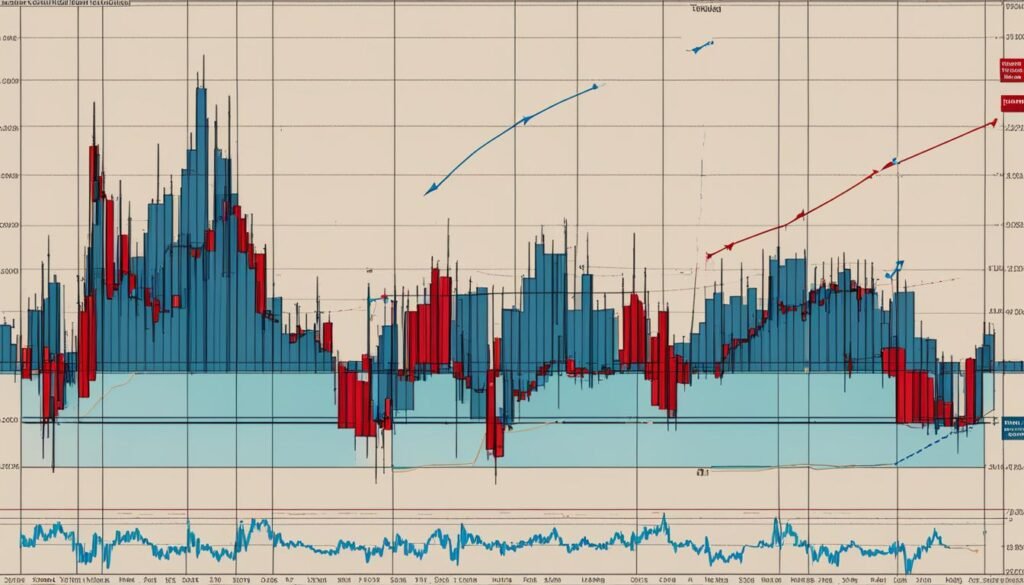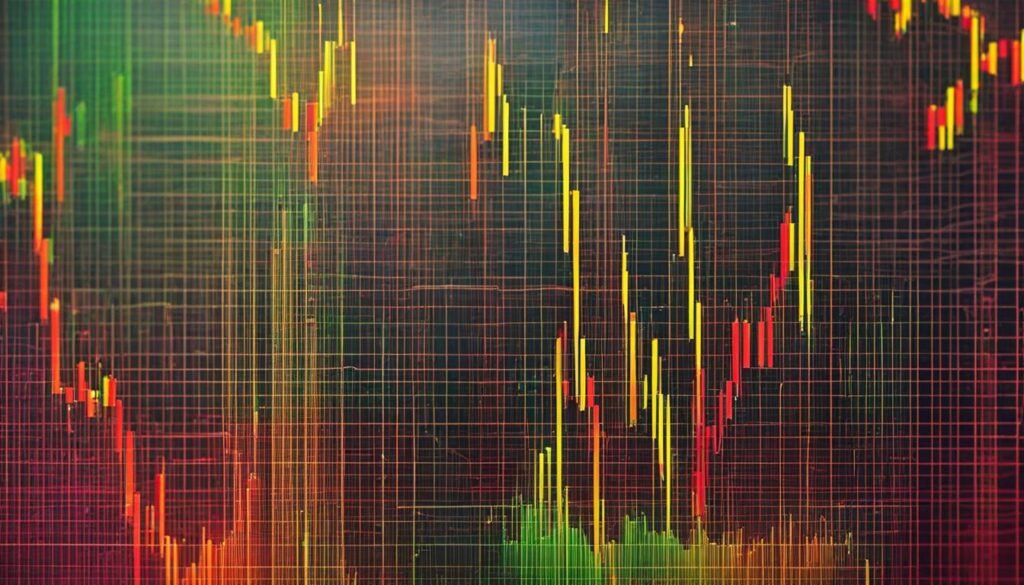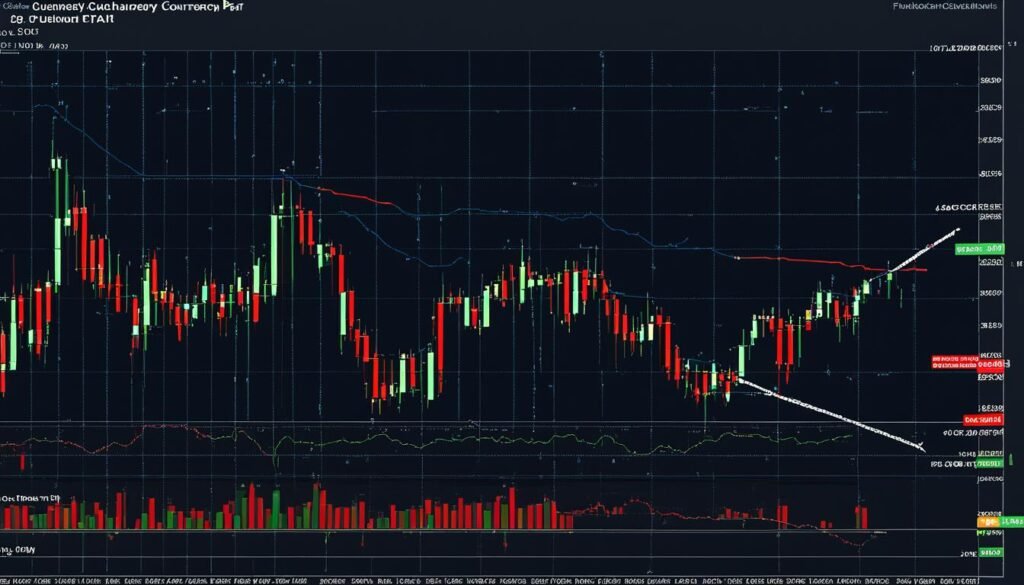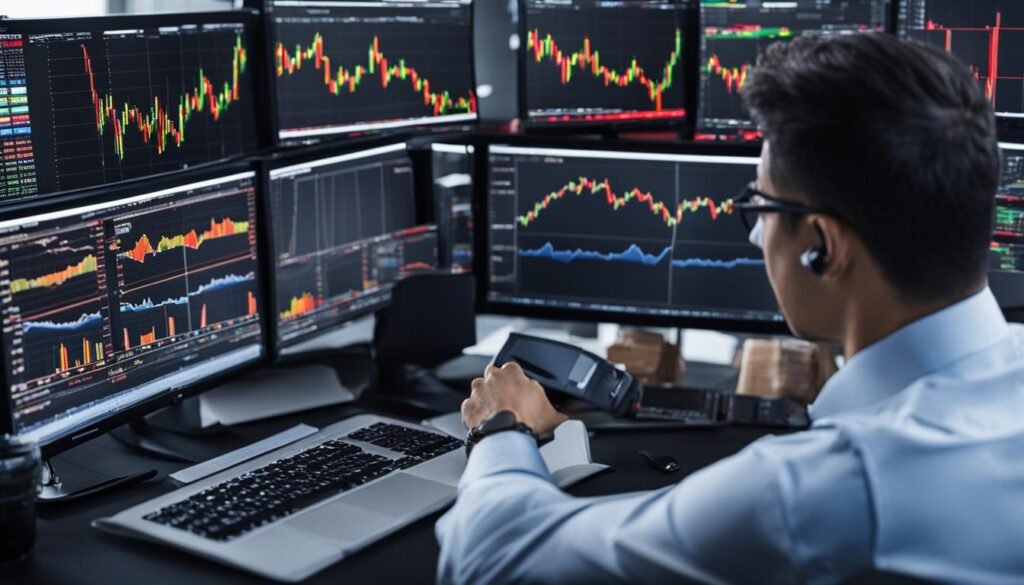As a currency trader, you are constantly seeking profitable trading opportunities. Your ultimate goal is to make informed trading decisions and generate consistent profits. In order to achieve this, it is essential to understand the importance of technical analysis in currency trading.
Buy This Premium Website for Only 18999 CHF!
Acquire a high-authority website complete with content and a premium domain name.
Contact Us Today: Email: info@cleardesign.ch
Technical analysis is a popular approach used by traders to analyze the foreign exchange market and forecast potential price movements. By analyzing charts, trends, and technical indicators, traders can develop trading strategies that exploit the market’s inefficiencies.
Unlock the Secret to Forex Success with BOB James’ Top-Performing Signals! Experience the Ease of Proven, MyFXbook-Verified Strategies and Transform Your Trading Journey Today. Don’t Miss Out on Exceptional Performance – Join Now!
This section will introduce you to technical analysis strategies for currency trading. We will explore how you can use technical analysis to analyze the forex market, identify trading opportunities, and make informed decisions. By mastering these strategies, you can potentially generate consistent profits in the forex market.
Key Takeaways
- Technical analysis is essential in currency trading
- Technical analysis helps traders analyze the forex market and identify trading opportunities
- By mastering technical analysis strategies, traders can potentially achieve consistent profitability
Understanding Technical Analysis in Currency Trading
Technical analysis is an approach used by traders in the financial markets to evaluate historical price data and identify potential future market movements. In the context of currency trading, technical analysis plays a vital role in helping traders make informed decisions based on market trends and price behaviors. By understanding the foundations of technical analysis, traders can gain insights into the dynamics of the forex market and identify opportunities for profitable trades.
Technical analysis strategies involve using a variety of indicators, including support and resistance levels, chart patterns, and trendlines, to identify price movements. By analyzing the historical price data, traders can identify patterns and trends that may indicate future price changes. Forex market analysis is an ongoing process that requires attention to detail and the ability to recognize patterns and react to sudden market events.
Support and Resistance
Support levels refer to the price level at which demand for a particular currency pair is expected to be strong enough to prevent further price declines. In contrast, resistance levels refer to the price level at which the supply of a currency pair is expected to be sufficient to prevent further price increases. By identifying key support and resistance levels, traders can estimate potential entry and exit points for trades.
Trends and Chart Patterns
Identifying trends and chart patterns is an essential part of technical analysis. Traders analyze charts to identify specific patterns such as triangles, head and shoulders, and double tops/bottoms. These patterns help traders identify potential trading opportunities and make informed decisions based on market trends.
Technical Analysis Indicators
Technical analysis indicators are used to assist traders in making informed decisions based on market trends and price movements. Common technical analysis indicators used in forex trading include moving averages, relative strength index (RSI), and stochastic oscillators. By using these indicators, traders can develop forex trading strategies that incorporate technical analysis and make informed decisions based on market trends.
Overall, technical analysis is an essential tool in currency trading. By understanding the foundations of technical analysis and using a variety of indicators to analyze historical price data, traders can identify potential trading opportunities and make informed decisions based on market trends and price behaviors.
Chart Patterns: Unveiling Market Trends
Chart patterns are visual representations of market trends that traders use to identify potential trading opportunities and make informed decisions. They are an essential tool in technical analysis strategies, as they allow traders to recognize the market’s direction and predict potential price movements.
There are various types of chart patterns, and each one provides valuable insights into market dynamics. Some of the most common chart patterns include:
| Type of Chart Pattern | Description |
|---|---|
| Triangles | This pattern is formed by connecting two trend lines that converge towards a common point and indicates a potential market consolidation before a breakout in price. |
| Head and Shoulders | This pattern is identified by a peak (the head) and two smaller peaks (the shoulders) that indicate a potential reversal in the market. |
| Double Tops/Bottoms | This pattern is formed when the price reaches a certain level twice before reversing its direction and suggests a potential trend reversal. |
By using chart patterns in conjunction with other technical analysis indicators, traders can gain valuable insights into potential trading opportunities and make informed decisions.

Oscillators: Gauging Market Momentum
Technical analysis strategies such as oscillators help traders gauge market momentum. These technical indicators are useful in identifying overbought or oversold conditions and predicting potential trend reversals. In this section, we will discuss some of the commonly used oscillators in forex trading:
| Name | Formula | Interpretation |
|---|---|---|
| Relative Strength Index (RSI) | (100 – (100 / (1 + RS))) | Measures the magnitude of recent price changes to evaluate overbought or oversold conditions |
| Moving Average Convergence Divergence (MACD) | (12-day EMA – 26-day EMA) | Provides a visualization of the relationship between two moving averages, indicating potential trend reversals |
| Stochastic Oscillator | ((Current Close – Lowest Low) / (Highest High – Lowest Low)) * 100 | Measures the current closing price relative to the range of prices over a certain period, also identifying overbought or oversold conditions |
Using these technical analysis indicators can help traders make informed trading decisions and improve their chances of success. Traders should be familiar with the interpretation of these oscillators and use them in conjunction with other technical indicators and fundamental analysis.
Stay tuned for the next section where we will explore Moving Averages, which can provide valuable insight into market trends and support/resistance levels.

Moving Averages: Assessing Market Trends and Support/Resistance Levels
Moving averages are a popular technical tool used for analyzing currency markets. They reveal the average price of an asset over a specified period, smoothing out short-term price fluctuations and highlighting trends. Traders use moving averages to gain insights into market direction and key support/resistance levels. Moving averages are based on past prices and therefore are lagging indicators, but can be valuable in identifying emerging trends.
Types of Moving Averages
There are two main types of moving averages used in technical analysis: simple moving averages (SMA) and exponential moving averages (EMA). SMA uses an average of past prices over a specified period, while EMA places greater weight on recent prices. This causes the EMA to react more quickly to price changes than the SMA. Traders often use both types of moving averages together to analyze support/resistance and confirm trend directions.
Using Moving Averages in Trading
Traders can use moving averages to determine potential entry and exit points in the market. When the price of an asset crosses above the moving average, it is considered a buy signal, while a sell signal is generated when the price falls below the moving average. Additionally, traders can utilize moving averages to identify key support/resistance levels, as price tends to revert to the moving average over time.

Pros and Cons of Moving Averages
| Pros | Cons |
|---|---|
|
|
Overall, moving averages can be an effective tool for traders who are looking to confirm trends and support/resistance levels in the market. However, due to their lagging nature and potential for false signals in choppy markets, it is important to use them in conjunction with other technical analysis indicators and risk management strategies.
Fibonacci Retracement: Predicting Price Corrections
In forex trading, predicting potential price corrections can be a key factor in achieving successful trades. One tool that traders can use to this end is Fibonacci retracement. The Fibonacci sequence is a mathematical formula in which each number is the sum of the two preceding ones. This sequence can be used to identify potential retracement levels in the market.
Traders can apply this tool to a chart of the market’s high and low points. Using the retracement levels, traders can identify potential areas of support and resistance where the price may reverse or continue its trend. The most commonly used retracement levels are 38.2%, 50%, and 61.8%.
Fibonacci retracement can also be used alongside other technical analysis tools to set profit targets and determine stop-loss levels. By identifying these levels, traders can manage their risks and make informed trading decisions.

“Fibonacci retracement is a reliable tool that can help traders identify potential market corrections and make informed trading decisions.”
Japanese Candlestick Patterns: Reading Price Action
When it comes to technical analysis in currency trading, Japanese candlestick patterns can provide valuable insights into price action and market sentiment. These patterns are formed by the opening, closing, highs, and lows of an asset’s price during a certain period.
Traders can analyze Japanese candlestick patterns to identify potential reversals or continuations in the market, allowing them to make informed trading decisions. Here are some common candlestick patterns:

Doji
A Doji indicates indecision between buyers and sellers. It occurs when the opening and closing prices are the same or close to it and usually signals potential trend reversals.
Engulfing Pattern
An engulfing pattern occurs when a small candlestick is followed by a larger one that completely engulfs the previous candle. This pattern can signal potential trend reversals.
Hammer
A hammer candlestick pattern is characterized by a long lower shadow and a small real body. It indicates that buyers entered the market during the period, pushing the price up, but sellers took control before the end of the period, dragging the price back down. This pattern often signals potential trend reversals.
By interpreting these patterns and understanding their significance, traders can enhance their technical analysis strategies and gain valuable insights into the market.
Volume Analysis: Confirming Price Movements
Volume analysis is a critical component of technical analysis strategies utilized in forex trading. The volume of market transactions is an excellent indicator of market sentiment that can confirm price movements and help traders evaluate the strength of a trend.
Traders can use volume indicators in forex market analysis to validate price trends and identify potential breakouts or reversals. By analyzing volume patterns, traders can identify areas in the market where high trading activity aligns with significant price movements.
Understanding volume patterns can provide traders with additional confidence in their technical analysis strategies and forex trading techniques. High volume during a price breakout indicates that the breakout is more valid, whereas low volume during a breakout suggests that the market might retract to the previous price level.
“Volume is the force that causes prices to move. If the market does not follow through on a high volume breakout, then it is sending a warning that it is not ready to move up further and a reversal may be in the cards.” – Marc Chaikin, creator of the Chaikin Oscillator.
Traders can use multiple volume indicators to gain different insights about market trends, including the Chaikin Money Flow (CMF) indicator, On-Balance Volume (OBV), and the Accumulation/Distribution Line (ADL). By monitoring volume in conjunction with other technical analysis indicators like moving averages and candlestick charts, traders can make more informed trading decisions.
Risk Management: Mitigating Trading Risks
Effective risk management is essential in forex trading, and it starts with understanding the potential risks involved. No trader can avoid risk entirely; therefore, managing it appropriately is vital for long-term success.
Stop-loss orders are a popular risk management tool that traders can use to limit their losses. By setting a predetermined price level to exit a trade, traders can automatically close their position if the market moves against them, protecting their capital from further losses.
Another approach is to use trailing stops, which can help to lock in profits and limit losses simultaneously. Trailing stops automatically adjust the stop-loss level as the trade moves in the trader’s favor, giving them the opportunity to catch more significant price movements while protecting their profits.
It’s important to remember that position sizing plays a crucial role in managing risks. Traders should never risk more than they can afford to lose on a single trade. Many traders limit their risk to a percentage of their trading account balance, typically no more than 2-3%.
Here is an example of a table outlining the potential risk and reward for maintaining different levels of risk exposure:
| Risk Exposure | Maximum Loss | Minimum Gain Required to Break Even | Recommended Risk Limit |
|---|---|---|---|
| 1% | -$100 | $100 | 2-3% of trading account balance |
| 3% | -$300 | $300 | 2-3% of trading account balance |
| 5% | -$500 | $500 | 2-3% of trading account balance |
By employing effective risk management strategies and limiting their risk exposure, traders can mitigate the negative impact of market volatility and increase their chances of success in the forex market.
Developing a Trading Plan: Putting Technical Analysis into Action
Having a well-defined trading plan is crucial for success in currency trading. A solid plan that incorporates technical analysis strategies can help traders stay disciplined and focused. Here are some key steps for developing a customized trading plan:
- Define Your Goals and Risk Tolerance: Before making any trades, determine your risk tolerance and set realistic trading goals. Consider factors such as your financial situation, time constraints, and personal preferences.
- Choose Your Trading Style: There are a variety of trading styles, including day trading, swing trading, and position trading. Choose a style that aligns with your goals and matches your skills and experience.
- Identify Your Entry and Exit Points: Technical analysis can help you identify potential entry and exit points based on price patterns, support and resistance levels, and other indicators.
- Define your Risk-Reward Ratio: Determine your desired risk-reward ratio for each trade, which should be at least 1:2 or higher. This means that your potential reward should be at least twice your potential risk.
- Set Your Stop-Loss Orders: Use stop-loss orders to limit your losses if the market moves against you. Set these orders at key support or resistance levels identified through technical analysis.
- Monitor Your Trades: Keep track of your trade progress using a trading journal or spreadsheet. This can help you identify patterns or areas for improvement in your trading strategy.
Remember that no trading plan can guarantee success, but having a well-defined plan based on technical analysis strategies can help you make informed trading decisions and manage risks effectively. Be prepared to adjust your plan as market conditions change, and always stay disciplined and focused on your goals.
Backtesting and Demo Trading: Testing Strategies
Before engaging in live trading, it’s essential to test your technical analysis strategies to ensure their effectiveness. Two methods of testing are backtesting and demo trading.
Backtesting Strategies
Backtesting involves analyzing historical price data to evaluate how a particular trading strategy would have performed in the past. This method helps traders identify the strengths and weaknesses of their strategy and make necessary adjustments. To backtest a strategy, you can use specialized software that automatically processes historical data and generates trading signals based on your strategy’s criteria.
When backtesting, it’s crucial to use a large dataset that includes different market conditions to ensure its accuracy. This method can give insights into how strategies could perform in live trading, allowing traders to adjust or refine them before risking real money.
Demo Trading
Demo trading allows traders to simulate real trading conditions without taking any actual risk. It’s a risk-free environment to test and practice your strategy while getting familiar with the trading platform. Demo accounts are offered by most forex brokers and operate in real-time market conditions.
Through demo trading, traders can test their strategies in real-time conditions without risking any real capital. It helps them gain confidence and refine their approach as they learn to control emotions and evaluate trading decisions.
Putting it All Together
When testing technical analysis strategies, a combination of backtesting and demo trading can give traders valuable insights into how strategies could perform in real market conditions. By refining their approach and continuously testing their strategies, traders can increase their chances of success and make informed trading decisions.
Conclusion
In conclusion, technical analysis is an essential skill for currency traders looking to make informed trading decisions in the forex market. By utilizing technical indicators, charts, and trends, traders can gain valuable insights into market movements, identify potential trading opportunities, and manage their risks effectively.
Throughout this article, we have explored various technical analysis strategies that traders can use to analyze currency markets, including chart patterns, oscillators, moving averages, Fibonacci retracement, Japanese candlestick patterns, and volume analysis. We have also emphasized the importance of risk management and developing a well-defined trading plan based on technical analysis.
By mastering these technical analysis strategies and incorporating them into their trading arsenal, traders can potentially achieve consistent profitability in the forex market. However, it is essential to note that technical analysis is not foolproof, and traders should also consider fundamental analysis and market news when making trading decisions.
Therefore, we recommend that traders continually refine their technical analysis approach by backtesting strategies and demo trading before risking real money. With dedication, discipline, and a focus on continuous learning, traders can harness the power of technical analysis to achieve long-term success in currency trading.
FAQ
What is technical analysis and why is it important in currency trading?
Technical analysis is a method used by traders to analyze historical price data and predict future market movements. It involves the use of various technical indicators, charts, and trends to identify potential trading opportunities. Technical analysis is important in currency trading as it helps traders make informed decisions based on historical patterns and market behavior.
What are some practical strategies for analyzing the forex market using technical indicators?
There are several strategies that currency traders can use for technical analysis. Some common approaches include trend following, breakout trading, and support and resistance levels. Traders can also utilize oscillators, moving averages, Fibonacci retracement, Japanese candlestick patterns, and volume analysis to gain insights into market trends and make trading decisions.
How can chart patterns help traders in currency trading?
Chart patterns provide visual representations of market trends and can help traders identify potential trading opportunities. Some common chart patterns include triangles, head and shoulders, and double tops/bottoms. By recognizing these patterns, traders can make more informed decisions about entering or exiting trades.
What are oscillators and how can traders use them to gauge market momentum?
Oscillators are technical indicators that help traders gauge market momentum and identify overbought or oversold conditions. Examples of popular oscillators include the Relative Strength Index (RSI), Moving Average Convergence Divergence (MACD), and Stochastic Oscillator. Traders can use these indicators to identify potential trend reversals and make trading decisions.
How can moving averages be used to assess market trends and support/resistance levels?
Moving averages are commonly used in technical analysis to identify market trends and determine support and resistance levels. Traders can use different types of moving averages, such as simple moving averages (SMA) and exponential moving averages (EMA), to confirm trends, spot entry/exit points, and determine key support/resistance levels.
What is Fibonacci retracement and how can it be used to predict price corrections?
Fibonacci retracement is a tool used in technical analysis to predict potential price corrections within a trend. Traders use the Fibonacci sequence and retracement levels to identify areas where the price may reverse or continue its trend. This tool can assist traders in setting profit targets and determining stop-loss levels.
How can Japanese candlestick patterns help traders in reading price action?
Japanese candlestick patterns provide valuable insights into price action and market sentiment. Traders can interpret patterns such as doji, engulfing, and hammer to identify potential reversals or continuations in the market. By understanding candlestick patterns, traders can make more informed trading decisions.
How can volume analysis confirm price movements in trading?
Volume analysis is a powerful tool that can confirm price movements and signal the strength of a trend. Traders can use volume indicators to validate price action and identify potential breakouts or reversals. Understanding volume patterns can provide traders with additional confidence in their trading decisions.
What are some risk management strategies for mitigating trading risks?
Risk management is crucial in currency trading. Traders can employ various strategies to protect their capital, such as setting stop-loss orders, using trailing stops, and maintaining proper position sizing. By managing risks appropriately, traders can increase their chances of long-term success.
How can traders develop a trading plan incorporating technical analysis?
Having a well-defined trading plan is important in currency trading. Traders can incorporate technical analysis into their trading plan by identifying entry and exit points, defining risk-reward ratios, and monitoring trade progress. A solid trading plan based on technical analysis can help traders stay disciplined and focused.
Why is it important to backtest and demo trade trading strategies?
Testing trading strategies is essential before risking real money. Traders should backtest their strategies using historical data and use demo accounts to simulate real trading conditions. By testing their strategies, traders can refine their approach and gain confidence in their trading decisions.


